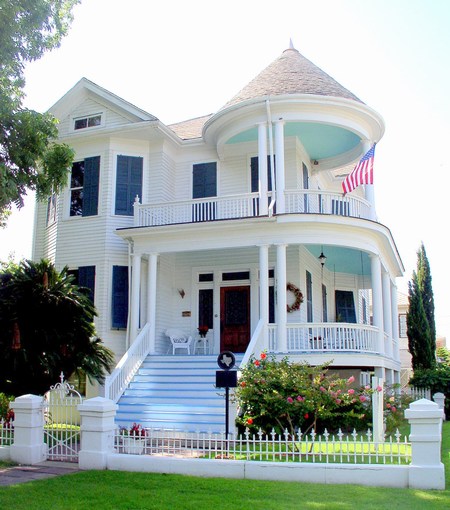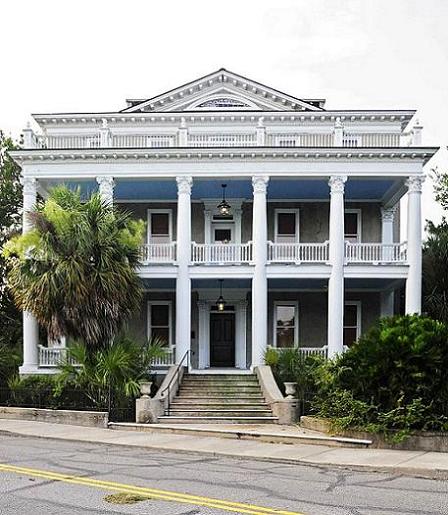Haint Blue: The Shades for the Shades
on Sunday, October, 19 2014 08:35:00 am , 614 words
Categories: Uncategorized , 168498 views
The autumnal equinox having passed and the length of the nights increasing, you are probably pondering the usual concern of this spooky time of year: keeping the ghosts at bay and thus protecting your abode from a haunting. (Of course you are! No use denying it!) Well, one sure-fire method, long a tradition through much of the South and to certain degrees in a few other areas, has not only reputedly effectively warded off the spooks but added to the aesthetics of homes ghosts just might covet.
Some of the reasons given for the popularity of shades of blue for porch ceilings are that sky and water hues are simply a traditional standard, bring good luck to residents, or provide more light through reflection as the late day sun goes down. Victorian era homeowners especially preferred the colors of nature, and blues were popular to lend verandas the impression of clear sunny days even in the midst of stormy weather.
Folklore has it that painting porches any of varying shades known, particularly in the South, as haint blue will keep an abode ghost free! The origins of this particular folklore has been attributed to different cultures but a tradition of Antebellum slaves is most often cited. It is said that the Gullah (also called Geechee) slaves on the Low-Country (Tidewater) plantations of South Carolina, Georgia, and northern Florida, held the belief that haints, being lost and wandering malevolent spirits caught between life and death, balk at the prospect of crossing bodies of water. Thus the colors of water confuse them and keep them from crossing verandas painted in such hues. (So much for the various and sundry Lady of the Lake and La Llorona tales, one might scoff! But then those tales do not originate from African cultures.) Likewise the Gullah believed the heavenly color of sky blue was a certain deterent to these ill-disposed spirits, as the "up-lifting" shade would draw them up and away from the mortal denizens of the abode. Haint blue is not a specific shade. Rather, the term covers all color applications that historically were utilized to protect homes from restless spirits.
Blues are averred not only to keep away unwanted guests of the bugbear sort but have been reputed to discourage the nuisance and unsightly housekeeping wrought by critters of the bug kind as well. Eaves and porches act as magnets for spiders and insects, especially wasps and dirt daubers. These small creatures find such havens as porches to be ideal locales for building their own abodes. Although there is no scientific evidence to support the claim that blue hues specifically repel bugs, it has been theorized that they were discouraged by the lime mixed with milk to make paints in earlier days. Over time, especially after the decline in the use of milk paints, the idea gained currency that blue porch paints discourage bugs from nesting because they are fooled into thinking the porch blue is actually the sky. (Of course, this notion does not take into consideration that bees and many other insects see light in the ultraviolet spectrum.)
Will painting your porch ceilings haint blue chase away the ghosts? You'll just have to try it for yourself. But just in case, you might want to stock up on treats come October 31st. No telling what manner of determined critter might then just turn up on your veranda.


